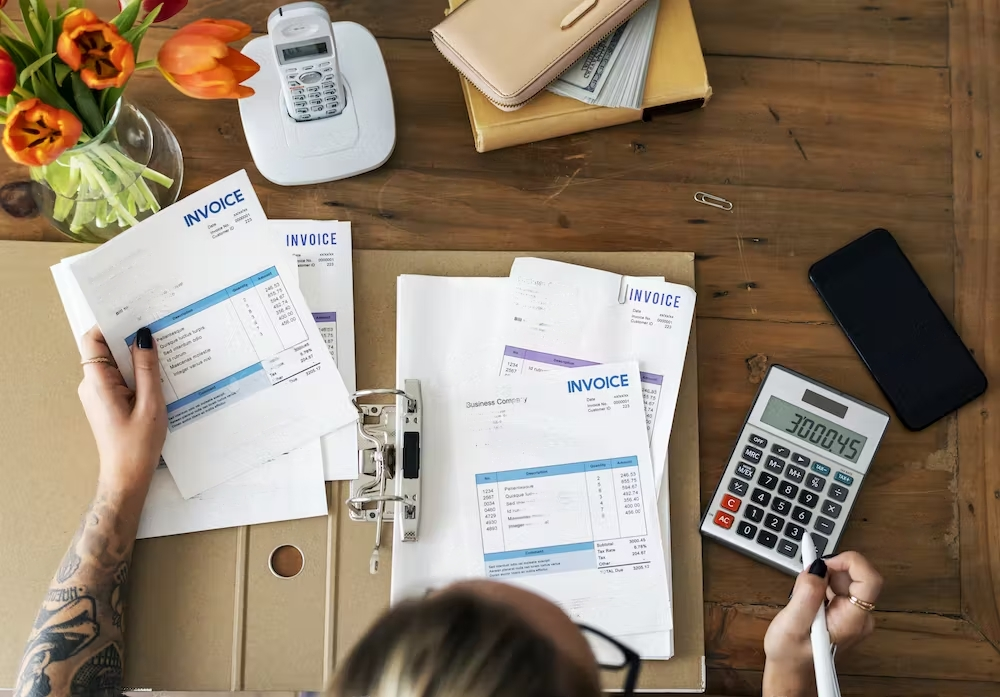
Depreciation is an important concept to understand when managing finances in your business. It’s a way of accounting for the gradual loss in value of certain assets over time.
When managed correctly, depreciation can be a powerful tool to help you optimise your budget and maximise your profits.
This guide will explain how depreciation works, how to calculate it, and how to maximise it.
Understanding Depreciation In Accounting
Depreciation is an important accounting method used to reflect the value of tangible assets over time accurately. Companies can more accurately report their financial position by recognising the gradual decline in an asset’s value and allocating it accordingly.
Depreciation allows businesses to plan for the future, manage their taxes and ensure they make sound investments while still achieving their goals.
Additionally, it allows companies to spread out the cost of purchasing an asset over time and generate revenue from it.
By calculating the depreciation of an asset, companies can accurately track how much of the original value has been used up and make informed decisions about their future purchases.
Not accounting for depreciation can significantly decrease profits, as companies cannot claim the tax savings associated with depreciation. Furthermore, depreciating long-term assets is also beneficial from an accounting standpoint, as it helps to accurately reflect the asset’s true value on the company’s balance sheet.
How Does Depreciation In Accounting Work?
Depreciation consists of two main components. The first component is the reduction in the value of an asset over time due to factors such as wear and tear. This decrease in the asset’s worth is known as ‘depreciation’. The second component involves allocating the cost of a large purchase over its estimated useful life.
For example, with expensive assets, the second component can be applied. This is because by matching depreciation expenses to related revenues in the same reporting period, businesses can realise the full value of their assets without having to pay for it all at once. This helps improve their cash flow and keeps them financially healthy.
There are many different types of assets, such as commodities, property, equipment, and machinery. Asset depreciation is a critical consideration when creating a budget or balance sheet. This fixed cost helps to ensure that the value of an asset is accurately reflected in your financial statements over time. From the balance sheets, the assets’ costs are then moved to their income statements.
While many businesses use straight-line depreciation, other methods, such as the units of production method, can be used to accurately reflect changing values of assets over time. Understanding asset depreciation is essential for creating an accurate and comprehensive yearly budget or balance sheet.
When a company purchases an asset, it records the transaction by increasing the asset account on the balance sheet via a debit and decreasing cash (or increasing accounts payable) through a credit – both of which are reflected on the balance sheet.
Results from journal entries do not impact the income statement, where financial transactions related to revenue and expenses are recorded.
This is how an accountant books depreciation for capitalised assets that have not yet depreciated at the end of the accounting period:
- The depreciated expense is debited in the journal entry. The amount is then reflected in the income statement.
- The balance sheet also contains the credited amount to the accumulated depreciation, which has been recorded over time.

Assets That Can And Can't Be Depreciated
Assets that can be depreciated have a useful life of more than one year and are used to produce income. For example:
- An asset owned by you
- An asset expected to last for more than one year
- An asset that is used in your business
- An asset that is used to produce income
On the other hand, assets that cannot be depreciated include land, investments, and intangibles such as goodwill. Businesses need to understand which assets can and cannot be depreciated to account for their expenses and taxes properly.
Types Of Depreciation
Straight-Line Depreciation
Straight-Line depreciation is an accounting method used to calculate an asset’s value decline over time. It is one of the most commonly used methods of depreciation. It involves dividing the asset’s cost by the estimated useful life and deducting it from its book value each year.
This method allows businesses to spread out their expenses and accurately reflect their assets decline in value over time. You can calculate this type of depreciation by dividing the asset’s cost, not including its salvage value, by the estimated number of years of its useful life.
Straight-line depreciation is favoured due to its simplicity and accuracy. Additionally, it simplifies the forecasting of accounts by ensuring businesses spend the same amount every accounting cycle.
Double-Declining Depreciation
Double-Declining depreciation is an accounting method used to depreciate assets over time. It is a popular method for businesses to spread out the cost of an asset over its useful life.
This method allows businesses to save on taxes as they can claim a larger deduction in the early years of the asset’s life than in later years.
The double-declining depreciation method is advantageous for businesses as it allows them to take advantage of tax benefits while accurately reflecting their assets’ depreciation in their financial statements.
The formula for this method is the book value, which is the asset’s costs minus the depreciation amount you already have.
Sum Of The Years' Digits Depreciation
Sum Of The Years’ Digits (SYD) depreciation is an accounting method used to depreciate assets over their useful life. This method allows companies to account for the diminishing value of assets over time and is considered an accelerated form of depreciation.
SYD enables businesses to accurately calculate the depreciation expenses for a given period and make smarter financial decisions. SYD employs a system that determines a weighted proportion considering the asset’s remaining life expectancy.
This approach helps recognise the asset’s value quickly in the early years of its useful life and gradually reduces it later. This method gives companies greater control over their income tax liability, making it an attractive choice for many businesses.
Its formula is the (Remaining lifespan / SYD) x (Asset cost – Salvage value).
Units Of Production Depreciation
This type of depreciation is used to depreciate an asset’s value based on how often it is used.
It considers the amount of output produced by the asset and thus captures its decline in value due to wear and tear caused by usage. It is typically used for assets such as machines, vehicles and equipment used in a business’s operations.
The unit of production depreciation method is advantageous as it gives you an exact idea of the amount spent on depreciation, as it depends on your tracking techniques. This means you get a precise picture of how much is spent on depreciation costs.
The challenge with this method is applying it to many real-world situations. Estimating how many products a business asset can produce before it reaches its end of life is not always straightforward.
Its formula is the (Asset cost – Salvage value) / Units produced in a useful life.
Conclusion
Depreciation is important for businesses to understand their assets. Depreciation allows businesses to spread their assets’ costs over time and reduce their taxable income.
It also helps businesses manage their cash flow and plan for the future. By understanding depreciation, businesses can make informed decisions about how best to manage their assets and maximise the value of their investments.
FAQS
Does depreciation affect tax liability?
Yes, it does.
Depreciation is a great way to reduce your business’s tax burden. By tracking how the value of your assets decreases, you can take advantage of deductions that lower the amount you have to pay in taxes. The larger your depreciation expense, the less taxable income you will have.
Why are assets depreciated over time?
Often, newer assets are more valuable than existing ones. Depreciation is the process of evaluating the decline in value an asset has incurred with time – whether from prolonged usage or other external factors such as market trends or inflation.
What is the main aim of depreciation in accounting?
Depreciation is an important accounting concept used to measure a business’s true profit accurately. It also ensures that funds are available to replace fixed assets over time.
By calculating depreciation, businesses can ensure they are correctly allocating funds for the replacement of assets and accurately determining their profitability.






